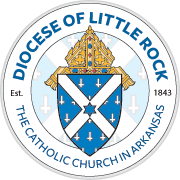Myths and Misconceptions

To help educate you on misconceptions of Human Trafficking, here are a few Myths and the Reality
Myth: Under the federal definition, trafficked persons can only be foreign nationals or only immigrants from other countries.
Reality: The federal definition of human trafficking includes both U.S. citizens and foreign nationals – both are protected under the federal trafficking statutes and have been since the TVPA of 2000. Human trafficking encompasses both transnational trafficking that crosses borders and domestic or internal trafficking that occurs within a country. Statistics on the scope of trafficking in the U.S. are most thorough and accurate if they include both transnational and internal trafficking of U.S. citizens as well as foreign nationals.
Myth: Human trafficking is essentially a crime that must involve some form of travel, transportation, or movement across state or national borders.
Reality: The legal definition of trafficking, as defined under the federal trafficking statutes, does not require transportation. Although transportation may be involved as a control mechanism to keep victims in unfamiliar places, it is not a required element of the trafficking definition. Human trafficking is not synonymous with forced migration or smuggling. Instead, human trafficking is more accurately characterized as exploitation, a form of involuntary servitude, or “compelled service” where an individual’s will is overborne through force, fraud, or coercion.
Myth: Human trafficking is another term for human smuggling.
Reality: There are many fundamental differences between the crimes of human trafficking and human smuggling. Both are entirely separate federal crimes in the United States. Most notably, smuggling is a crime against a country’s borders, whereas human trafficking is a crime against a person. Also, while smuggling requires illegal border crossing, human trafficking involves commercial sex acts or labor or services that are induced through force, fraud, or coercion, regardless of whether or not transportation occurs.
Myth: There must be elements of physical restraint, physical force, or physical bondage when identifying a human trafficking situation.
Reality: The legal definition of trafficking does not require physical restraint, bodily harm, or physical force. Psychological means of control, such as threats, fraud, or abuse of the legal process, are sufficient elements of the crime. Unlike the previous federal involuntary servitude statutes (U.S.C. 1584), the new federal crimes created by the Trafficking Victims Protection Act (TVPA) of 2000 were intended to address “subtler” forms of coercion and to broaden previous standards that only considered bodily harm. It is important for definitions of human trafficking in the U.S. and around the world to include a wide spectrum of forms of coercion in order for the definition to encompass all the ways that traffickers control victims.
Myth: Victims of human trafficking will immediately ask for help or assistance and will self-identify as a victim of a crime.
Reality: Victims of human trafficking often do not immediately seek help or self-identify as victims of a crime due to a variety of factors, including lack of trust, self-blame, or specific instructions by the traffickers regarding how to behave when talking to law enforcement or social services. It is important to avoid making a snap judgment about who is or who is not a trafficking victim based on first encounters. Trust often takes time to develop. Continued trust-building and patient interviewing is often required to get to the whole story and uncover the full experience of what a victim has gone through.
Myth: Human trafficking victims always come from situations of poverty or from small rural villages.
Reality: Although poverty can be a factor in human trafficking because it is often an indicator of vulnerability, poverty alone is not a single causal factor or universal indicator of a human trafficking victim. Trafficking victims can come from a range of income levels, and many may come from families with higher socioeconomic status.
Myth: Sex trafficking is the only form of human trafficking.
Reality: Elements of human trafficking can occur in the commercial sex industry as well as in situations of forced labor or services. The federal definition of human trafficking encompasses both “sex trafficking” and “labor trafficking,” and the crime can affect men and women, and children and adults.
Myth: Human trafficking only occurs in illegal underground industries.
Reality: Elements of human trafficking can be identified whenever the means of force, fraud, or coercion induce a person to perform commercial sex acts, or labor or services. Trafficking can occur in legal and legitimate business settings as well as underground markets.
Myth: If the trafficked person consented to be in their initial situation or was informed about what type of labor they would be doing or that commercial sex would be involved, then it cannot be human trafficking or against their will because they “knew better.”
Reality: A victim cannot consent to be in a situation of human trafficking. Initial consent to commercial sex or a labor setting prior to acts of force, fraud, or coercion (or if the victim is a minor in a sex trafficking situation) is not relevant to the crime, nor is payment.
Myth: Foreign national trafficking victims are always undocumented immigrants or here in this country illegally.
Reality: Foreign national trafficked persons can be in the United States through either legal or illegal means. Although some foreign national victims are undocumented, a significant percentage may have legitimate visas for various purposes. Not all foreign national victims are undocumented.
